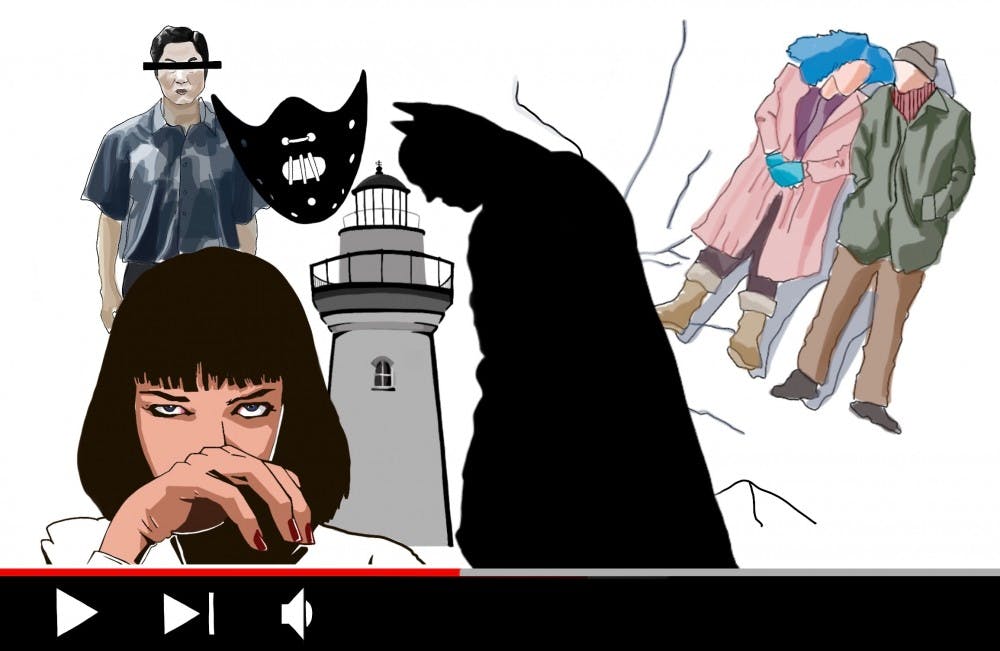Trailers are the most unpredictable form of advertising, and likely one of the most important ones. Often, trailers are created by companies that are not associated with the film and are responsible for crafting the 3–minute videos without full knowledge of the film itself. Generally, trailer–making begins before principal photography is completed. This art form is precarious, because it must straddle the line between teasing the film for those who have already been anticipating it, and advertising it to those who have never heard of it. For this balancing act, trailers often fall flat because they fail to accurately represent the source material—take Eternal Sunshine of the Spotless Mind or Batman Begins, whose trailers don't accurately represent their movies.
However, 2019 was a year of very good trailers for very subpar movies. Both Joker and The Goldfinch, which presuppose themselves to be Oscar contenders, released fantastic trailers in the late summer. In reality, both of those films were subpar at best. In fact, if they had been as good as their trailers, perhaps they might actually receive the Academy Awards that they set themselves up to reach. What went so right with their trailers, and why is there such a dichotomy between the trailers and and their films?
It's important to note how these trailers are different than those of the past. An important moment in trailer history was the phasing out of the voice–over. Looking at examples from the early 2000s, most are overwhelmed by a narrator. This style delivered exposition, and even elements of the plot, within a short timeframe, introducing characters, locations, and early plot developments. The most famous ones began with "In a world…” or “Meet [insert name],” the quirky main character of a rom–com. This was not a style reserved for low–brow pieces of cinema either—even The Silence of the Lambs features a voiceover telling its audience exactly who these people are and what’s going to happen.
Meanwhile, Joker, The Goldfinch, and any other anticipated releases have trailers that do not care as much about informing the audience of the films' exact plots. The trailer for A24’s upcoming film The Lighthouse does very little to tell its audience about what’s going to happen in the movie that they’re signing up for—in fact, it solely sets up the atmosphere. This shift to aestheticism—rather than plot and narrative focused trailers—shows a greater change in what an audience wants in a trailer—they do not want to necessarily know what’s going to happen, but rather how it's going to feel.
This change may have something to do with how people receive information about films. Looking back, there appears to be an element of condescension in the voice–over trailers, as though a viewer wouldn't be able to parse out the plot by themselves. It’s important to consider that these types of trailers were made before the era of the internet and social media, and the only way to learn about a movie was through watching it in the theaters. Now, the trailer for Parasite does not need to explicitly spell out what’s going to happen, because anybody who's confused can just Google it and find a write–up of the movie on Wikipedia.
Now, the once vital element, the voice–over, is replaced with the soundtrack. Often, the songs chosen for use in a trailer are those that are used in the film. The Goldfinch’s “Terrible Love” and Joker’s “Just Smile,” while two very different songs, are both used accurately and for powerful impact. The Goldfinch calls upon a modern–day loneliness, angst, and fear. Joker invokes old–timey nostalgia that rings darkly, and humor and joy left on a sour, frightening note. These song choices do absolutely nothing to spell out the plot of the movies. Instead, they're chosen purely for the feeling they invoke.
A film trailer can still have a strong aesthetic and a good movie to match with it, though. The Social Network has a beautifully scored trailer that realizes the movie’s main draw—its dialogue—while still remaining pretty, with an opening shot of Facebook in its early stages. And Roma’s trailer is haunting and tender, accurately representing the source material.
This is not to say that the aesthetic–based trailers are easier to make—it just means that movie trailer companies are getting better at making them. The films they accompany, though, should also maintain this same level of artistry and consistency in editing.







